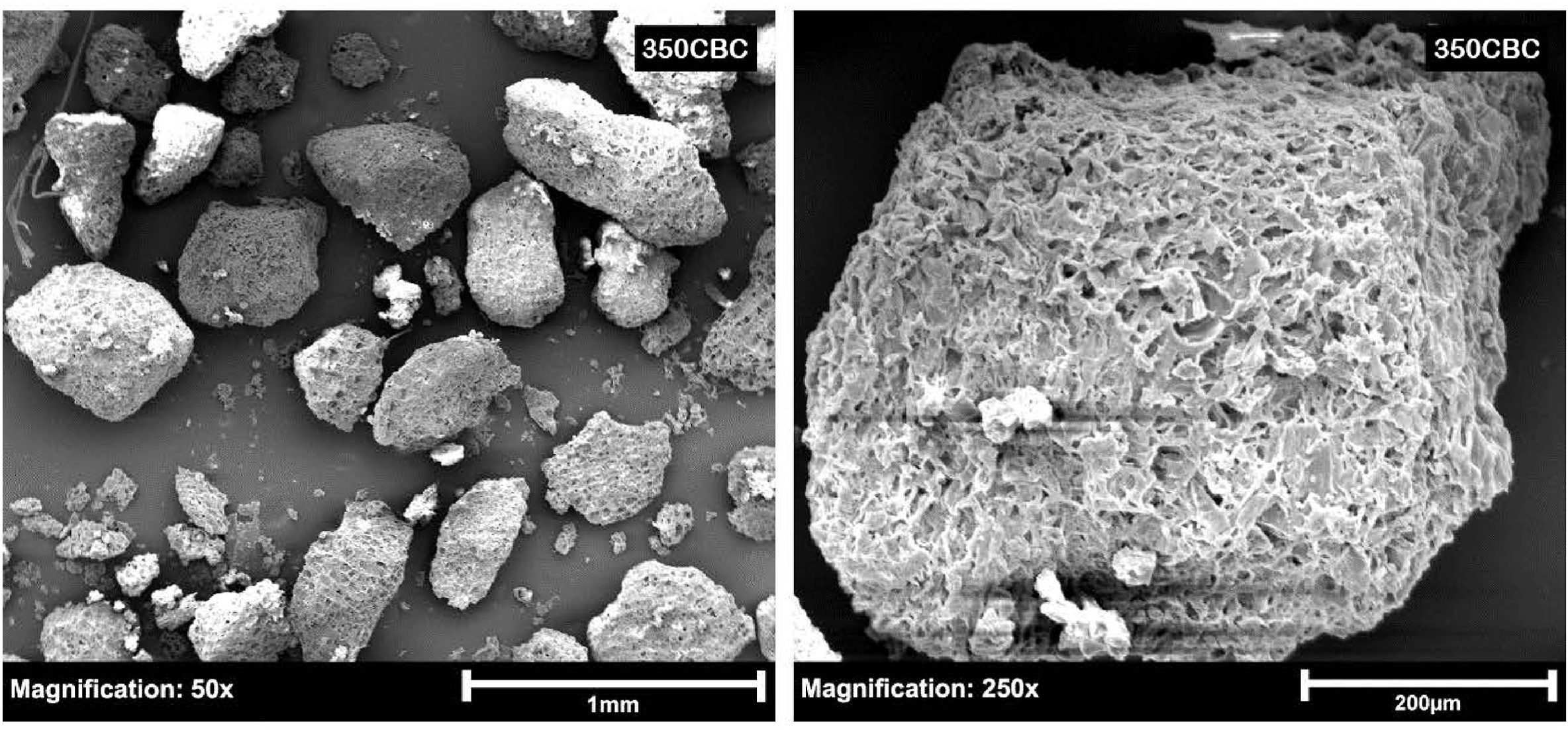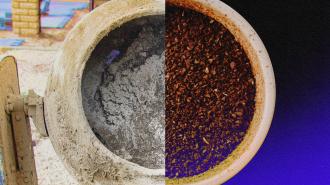Caffeine is the world’s most popular drug, and one of the most popular ways people enjoy their daily dose is coffee. Worldwide, people consume more than 2 billion cups of coffee every day, and each cup comes with associated economic, social, and even health benefits. All in all, not a bad addiction to have. However, there is a drawback: waste.
Coffee consumption creates massive amounts of waste in the form of used coffee grounds. By some estimates, we generate roughly 508 million kilograms of used grounds a day, and a significant portion of that waste ends up in landfills where it decomposes, producing methane and other greenhouse gasses.
Before reaching the landfill, however, used coffee grounds have the potential to be upcycled into something useful. A team of researchers and engineers out of RMIT University, Melbourne, wanted to see if they could incorporate coffee grounds into concrete. Not only was this technique viable, but it made the construction material stronger in the process.
“A double shot at life”
Recipes for concrete have been around for 10,000 years (give or take a millennium), and they consist of basically two ingredients: a paste and a filler. Today, the paste is a combination of cement and water, while the filler is usually an aggregate of materials such as sand and gravel. When churned together in a mixer, the paste coats onto the filler to form wet concrete, which is poured into a mold. Cure the concrete in the proper conditions, and it hardens into one of the innumerable rock-like slabs that give modern cities their shape.
The research team hypothesized that they could substitute a percentage of the filler in that recipe with coffee grounds. Now, they couldn’t simply toss the grounds into the cement mixer and call it a day. (As we’ll see, that approach produces a less-than-solid slab). They instead looked for a workaround and found one in biochar — the mostly carbon and ash leftovers of organic matter after it has undergone pyrolysis.
“The inspiration for our work was to find an innovative way of using the large amounts of coffee waste in construction projects rather than going to landfills – to give coffee a ‘double shot’ at life,” said Rajeev Roychand, a postdoctoral research fellow at RMIT and joint-lead author of the study.

Previous research showed that adding biochar to concrete mortar has the potential to enhance its quality. There is even historical precedent for the technique from ancient Rome. The Romans were the first people to mix concrete similar to our own, and their recipe included volcanic ash from the Pozzuoli region. In fact, some experts believe this ash is the reason Roman concrete has stood for millennia, whereas contemporary concrete tends to crack under the weight of a mere century (though, others disagree).
However, the previous research also shows that the quality of biochar-infused concrete depends greatly on the water-to-cement ratio, the amount of biochar used, and the source of that biochar. Not that dissimilar from brewing coffee, really.
Wake up and smell the concrete
First, the team collected coffee grounds from cafes around Melbourne. They then pyrolyzed the grounds at 350° and 500°C (662° and 932°F, respectively) to turn them into biochar. (Pyrolysis is the process in which organic matter thermally decomposes under extreme heat.)
With their biochar ready, the researchers mixed batches of cement that contained untreated coffee grounds, the 350° biochar, and the 500° biochar. In each, the grounds or biochar replaced a certain percentage of filler sand — from 5 to 20%. They hardened the batch samples and then put them through a battery of tests to determine qualities such as strength and bond performance.
The results showed that adding raw coffee grounds to concrete was — likely to no one’s surprise — a bad idea. After 28 days, the raw-grounds concrete fell well below the comprehensive strength of the control concrete (as measured in megapascals). The more added, the worse the results. Further analysis showed that the raw coffee grounds leached organic compounds into the mixture, which hindered the concrete’s ability to properly bond.

Conversely, the concrete mixed with 350° biochar fared much better. When substituting 10 or 15% of the sand with this biochar, the concrete proved to be 30% stronger than the control. At higher percentages, the concrete’s strength was comparable to the control’s. Further analysis showed the biochar also had an excellent bond performance.
For the concrete mixed with 500° biochar, the strength tests fell below that of the control. That’s because this biochar’s particles were highly porous and fragile. This created microcracks around the particles, which compromised the concrete’s strength. This result suggests that including biochar in concrete demands a Goldilocks touch: not only in how much biochar is included but also in its preparation.
The researchers published their results in the peer-reviewed Journal of Cleaner Production.
Grounds for a new course
Beyond reducing the amount of organic waste in landfills, the researchers also hope that this process can help lessen the impact of mining for concrete aggregates. The United States produced 960 million metric tons of sand and gravel in 2022, with an estimated 42% used as concrete aggregates. Worldwide, that number explodes to an estimated 40–50 billion metric tons a year. This makes sand and gravel one of the world’s most exploited natural resources, second only to water.
Most of this sand and gravel comes from land quarries and riverbeds; however, suppliers are also dredging coastal sands to keep up with the intense, and unsustainable, demand. Repurposing coffee grounds won’t be a perfect solution to this problem — the researchers found that only 15% of the sand content can be substituted to coffee biochar — but it may have an important role to play in potential solutions.
With a circular-economy approach, we could keep organic waste out of landfills and also better preserve our natural resources like sand.
Jie Li
“There are critical and long-lasting challenges in maintaining a sustainable supply of sand due to the finite nature of resources and the environmental impacts of sand mining,” Jie Li, a corresponding author and professor of infrastructure engineering at RMIT, said in the release. “With a circular-economy approach, we could keep organic waste out of landfills and also better preserve our natural resources like sand.”
Next, the researchers hope to work toward field trials and practical implementation strategies.
Of course, concrete is just one example of the ways we can upcycle the grounds from our morning coffee. Today, companies are using coffee grounds to create more eco-friendly biofuels and compressed fire logs. Local cafes give grounds to community gardens to enrich compost piles, while DIY solutions are finding at-home recycling opportunities, such as turning your daily grounds into a facial scrub or deodorizer.
All of which is to say, we have the means and incentive to have our circular economy and drink our coffee too.






